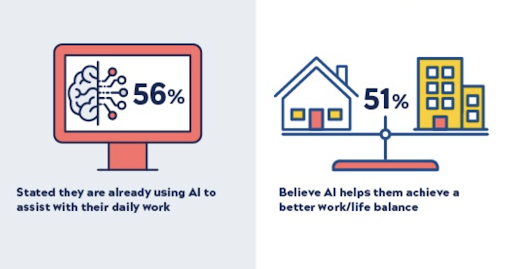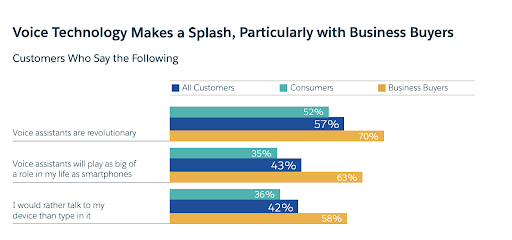The days of traditional time tracking are far behind us. With remote work, flexible hours, and freelancing on the rise, time sheets, punch cards, and time clock systems simply won’t suffice anymore. To keep up with the rapidly evolving work landscape and optimize hourly workforce productivity, businesses must turn to more sophisticated technologies to manage their hourly employees’ time.
By staying up to date with the latest time tracking trends and predictions, businesses can proactively respond to the ever-changing demands of the modern workforce and get ahead of the competition.
Trends in Time Tracking
In this era of rapid technological progress, businesses have access to a diverse range of tools and solutions with the potential to revolutionize and profoundly transform how they oversee their hourly workforce.
Mobile and Cloud-Based Tracking
The emergence of mobile and cloud-based tracking has revolutionized the world of time tracking, ushering in a new era of flexibility and accessibility. Mobile apps and cloud-based platforms have untethered time tracking from physical locations, enabling users to log their activities and hours on the go, from anywhere, with an internet connection.
This trend has been particularly beneficial for remote workers, freelancers, and those with dynamic work environments. With real-time data synchronization and remote access, users can seamlessly track their time, collaborate with team members, and monitor projects from different devices. The integration of mobile and cloud-based tracking has made the process more user-friendly, intuitive, and convenient, encouraging widespread adoption across diverse industries. As this trend continues to evolve, we can expect even more innovations that enhance the accuracy, efficiency, and integration of time tracking into our daily lives.
Integration With Wearable Tech
The advent of wearable technology has opened up new possibilities for time tracking and has proven to be a game-changer, especially for shift workers. Equipped with advanced sensors, smartwatches and fitness bands can now track activities and movements with remarkable precision. This means that not only can workers log their work hours effortlessly, they can also monitor physical activities, ensuring a holistic approach to time management.
Wearable tech not only promotes overall well-being, but also leads to improved productivity and better work-life integration. For example, by having a comprehensive overview of their time, users can make informed decisions about how to allocate their resources. This empowers individuals to prioritize self-care, leading to improved mental and physical health, which in turn contributes to higher levels of productivity and overall satisfaction in both personal and professional domains.
Artificial Intelligence and Automation
Artificial Intelligence (AI) has already made significant advancements in various sectors, and time tracking is no exception. AI-powered time tracking solutions can automate time capture by intelligently detecting when users start or stop work, making the process seamless and more accurate. Machine learning algorithms can analyze patterns in time usage, allowing users to optimize their productivity. In fact, 56% of employees use AI in the workplace, while 51% find it helps create a good work-life balance. AI-driven insights can also identify potential burnout or productivity slumps, providing valuable suggestions for improved wellness. In addition, these hour tracking systems can predict work-hour optimization, thus reducing the likelihood of errors.

For employers, AI can significantly revolutionize shift scheduling. Predictive scheduling algorithms can analyze historical data, employee preferences, and even external factors like weather or customer traffic to generate optimal schedules. Shifts can be allocated efficiently, minimizing overstaffing or understaffing issues. Predictive scheduling not only benefits employers by optimizing labor costs, but it also enhances job satisfaction for employees by assigning them more predictable and balanced work hours.
Voice and Natural Language Processing (NLP)
Voice recognition technology has come a long way from the time of its inception. Since virtual assistants like Amazon’s Alexa and Google Assistant made their debut, voice recognition technology has become increasingly sophisticated and accurate, with 70% of businesses saying it’s revolutionary. It enables employees to perform a wide range of tasks in the workplace through simple voice commands.
Employees can use it to clock in and out, verbally communicate their leave requests, or request other schedule changes. This eliminates the need for manual paperwork or navigating through complex digital interfaces, making the process more intuitive and efficient. Natural Language Processing can be used to process and understand written requests as well, further streamlining communication between employees and employers.

Predictions for the Future
These predictions offer a glimpse into how hourly tracking is set to influence the future of the workforce.
Predictive and Prescriptive Analytics
Predictive analytics will utilize historical time tracking data and patterns to forecast future trends and potential bottlenecks in productivity. This will allow individuals and businesses to proactively address issues before they arise, making time management more efficient and effective. On the other hand, prescriptive analytics will take time tracking to the next level by not only predicting future outcomes but also providing actionable insights and recommendations.
These suggestions may include personalized time allocation strategies, work pattern adjustments, and even intelligent automation suggestions, optimizing productivity and work-life balance. With the integration of predictive and prescriptive analytics, time tracking will evolve into a powerful tool that empowers individuals and organizations to make informed decisions, enhance productivity, and achieve their goals more effectively.
Blockchain-Backed Timestamping
Blockchain technology’s immutable nature makes it a promising candidate for verifying timestamps and records. Time tracking systems could leverage blockchain to provide indisputable evidence of when certain events occurred, such as project milestones, contract signings, or delivery confirmations. This level of trust and transparency will be crucial in sectors where accurate timestamping is essential and can successfully prevent fraudulent practices and enhance trust between employers and workers.
Integration With Remote and Gig Work
The rise of remote work and the gig economy has changed the traditional work landscape, and time tracking solutions are set to meet the needs of remote workers and freelancers. Future platforms may incorporate features like project-based billing, collaboration tools, and performance tracking to ensure fair compensation and foster remote team productivity.
5 Tips for Introducing Time Tracking to Your Employees
Introducing time tracking to employees requires a thoughtful and transparent approach.
1. Communicate the Benefits
Start by explaining the benefits of time tracking to your hourly employees. Emphasize that it will help them understand their work patterns, identify areas for improvement, and ensure fair compensation for their efforts.
2. Choose User-Friendly Tools
Select intuitive and user-friendly time tracking software or apps that align with your employees’ needs and work environment. Offer training sessions to familiarize them with the tools and address any concerns they may have.
3. Encourage Transparency
Create a culture of transparency around time tracking by explaining its purpose and assuring employees that it is not about micromanagement but rather optimizing productivity and resource allocation.
4. Set Realistic Expectations
Clearly define the time tracking requirements, including which activities should be tracked and any specific timeframes. Avoid overwhelming employees with excessive tracking demands and provide regular feedback to ensure they stay on track.
5. Reward and Recognize Compliance
Acknowledge and appreciate employees who consistently adhere to time tracking guidelines. Consider offering incentives or recognition for those who effectively use time tracking to improve their efficiency and contribute to the company’s success.
Nowsta: Your Solution for Time Tracking
As businesses adapt to the new gig economy, the demand for more granular employee monitoring keeps growing. By keeping up with trends and predictions, employers can gain greater insights into their employees’ work patterns so they can maximize profitability and reach optimal efficiency to drive success.
When you partner with Nowsta, you can stay ahead of the dynamic world of workforce management and make time tracking effortless.
To see how, reach out to one of our experts today.
